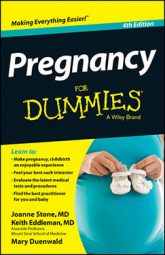No single food can satisfy all your nutritional needs. The USDA Choose My Plate is a general guideline that illustrates the relative proportions of servings you should eat in each group. To get some specific recommendations tailored for your pre-pregnancy weight and activity level, go to Choose My Plate and create a profile to receive a personalized “Daily Food Plan.”
![[Credit: United States Department of Agriculture]](https://www.dummies.com/wp-content/uploads/437992.image0.jpg)
The Choose My Plate (formerly known as the food pyramid) includes the following food groups:
Grains: While there are many different types of grains that are healthy to eat, the Choose My Plate refers to fortified dry and cooked cereals. Choose ones that are fortified with folic acid when possible. Other grains such as
Vegetables: Vegetables are divided into five groups, based on their nutrient content. The following list orders them from highest nutrient content (dark green vegetables) to lowest (other vegetables), and includes examples within each category:
Dark green vegetables: Spinach, dark green leafy lettuce, romaine lettuce, broccoli, kale, turnip greens, watercress
Orange vegetables: Carrots; pumpkin; sweet potatoes; acorn, butternut, and Hubbard squash
Dry beans/peas: Pinto, black, garbanzo, kidney, navy, soy, and white beans; split peas; lentils; tofu
Starchy vegetables: Potatoes, corn, green peas, green lima beans
Other vegetables: Cabbage, cauliflower, iceberg lettuce, green beans, celery, green and red peppers, mushrooms, onions, tomatoes, asparagus, cucumbers, eggplant
Pregnant women should try to fill half of their plate with fruits or vegetables. Any of the preceding vegetables or pure vegetable juice counts toward this goal, but dark green or orange vegetables and dried beans are best because their nutrient content is higher. Eating a variety of different vegetables is also important, though.
Fruits: A variety of fruits is an important part of your diet while you are pregnant. Fruits are not only a good source of vitamins and minerals, but they also provide fiber, which is very important during pregnancy to help reduce constipation. Fruits contain healthy amounts of vitamins A and C, as well as potassium.
You can choose fresh, frozen, canned, or dried fruits. Go easy on the fruit juices, though, because they can contain lots of extra sugar.
Dairy: Foods that fall in this group include milk, yogurt, and cheese, and all are great sources of calcium. It’s best to focus on low-fat or fat-free milk products whenever possible. An average-sized woman needs to consume about three cups of milk or milk products per day.
Protein: Meat, poultry, fish, dry beans, and nuts fall into this category. You should focus on low-fat and lean foods in this category and vary your choices. Baking, broiling, and grilling are the healthiest ways to cook meat, poultry, and fish. During pregnancy, you should eat five to seven ounces of food from this category daily.
Experiencing morning sickness during the first trimester is very common. If you’re experiencing this nausea and can’t eat a well-balanced diet, you may wonder whether you’re getting enough nutrition for you and the baby.
You actually can go for several weeks not eating an optimal diet without any ill effects on the baby. You may find that the only foods you can tolerate are foods heavy in starch or carbohydrates. If all you feel like eating are potatoes, bread, and pasta, go right ahead. Keeping something down is better than starving.
As your pregnancy progresses, your body needs a lot of extra fluid. Early on, some women who don’t drink enough liquid feel weak or faint. Later in pregnancy, dehydration can lead to premature contractions. Make a point of drinking plenty of water (or milk) — about six to eight glasses a day, and a bit more if you are carrying more than one baby.

